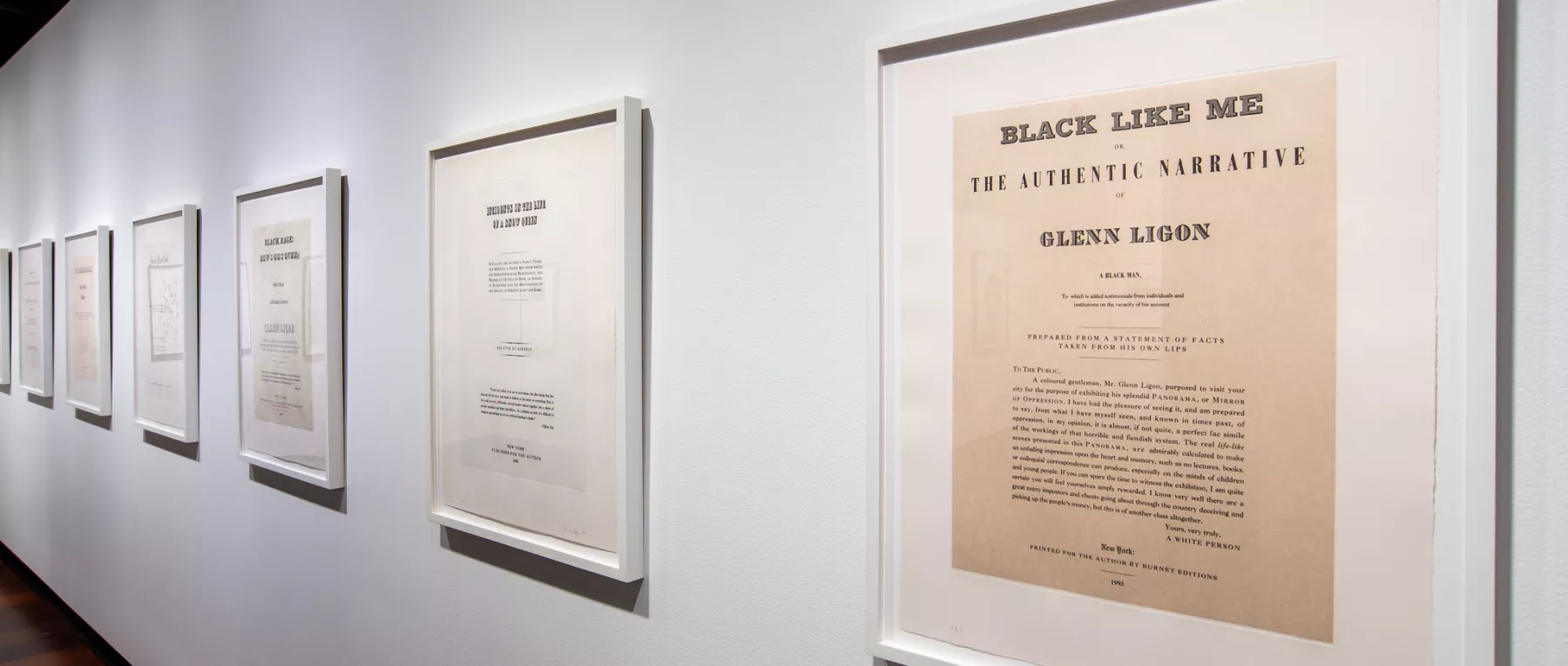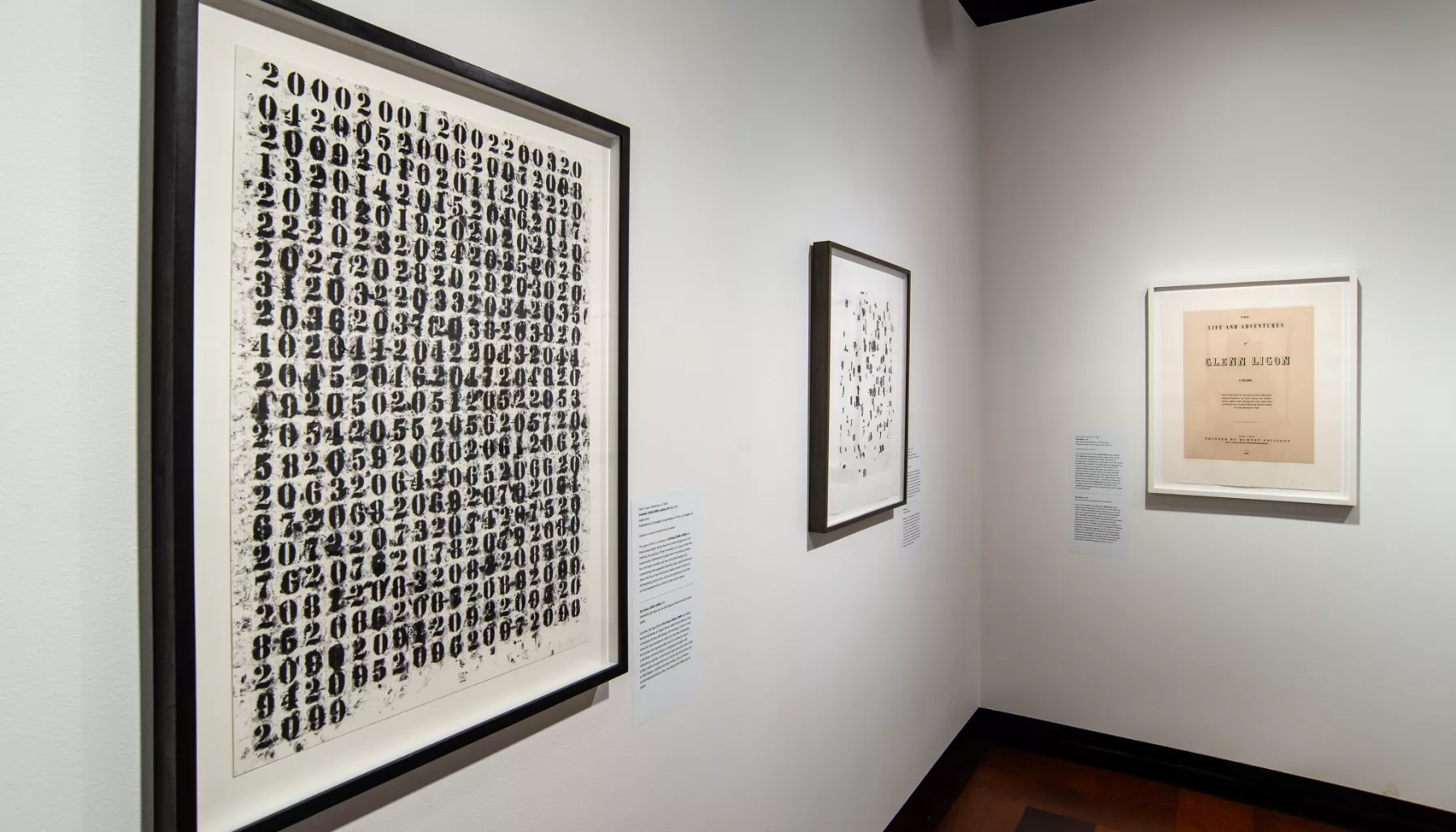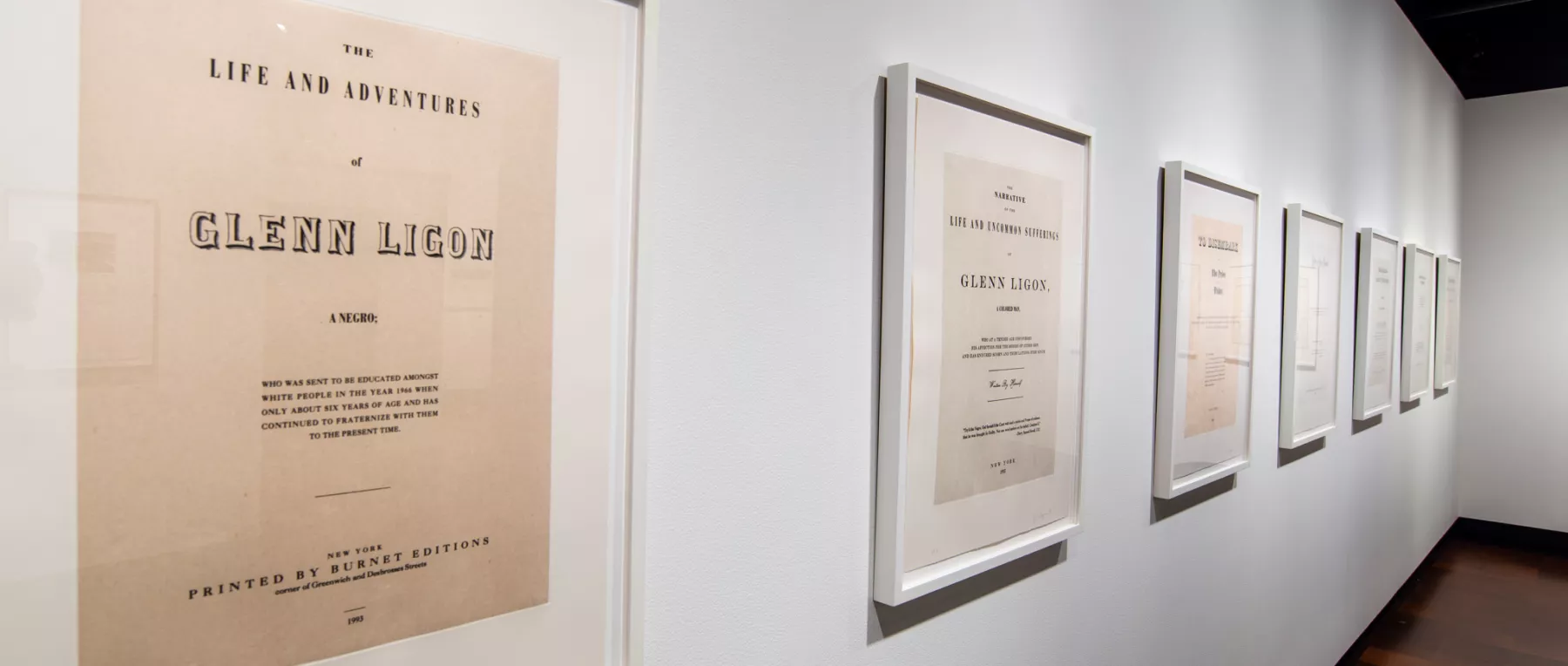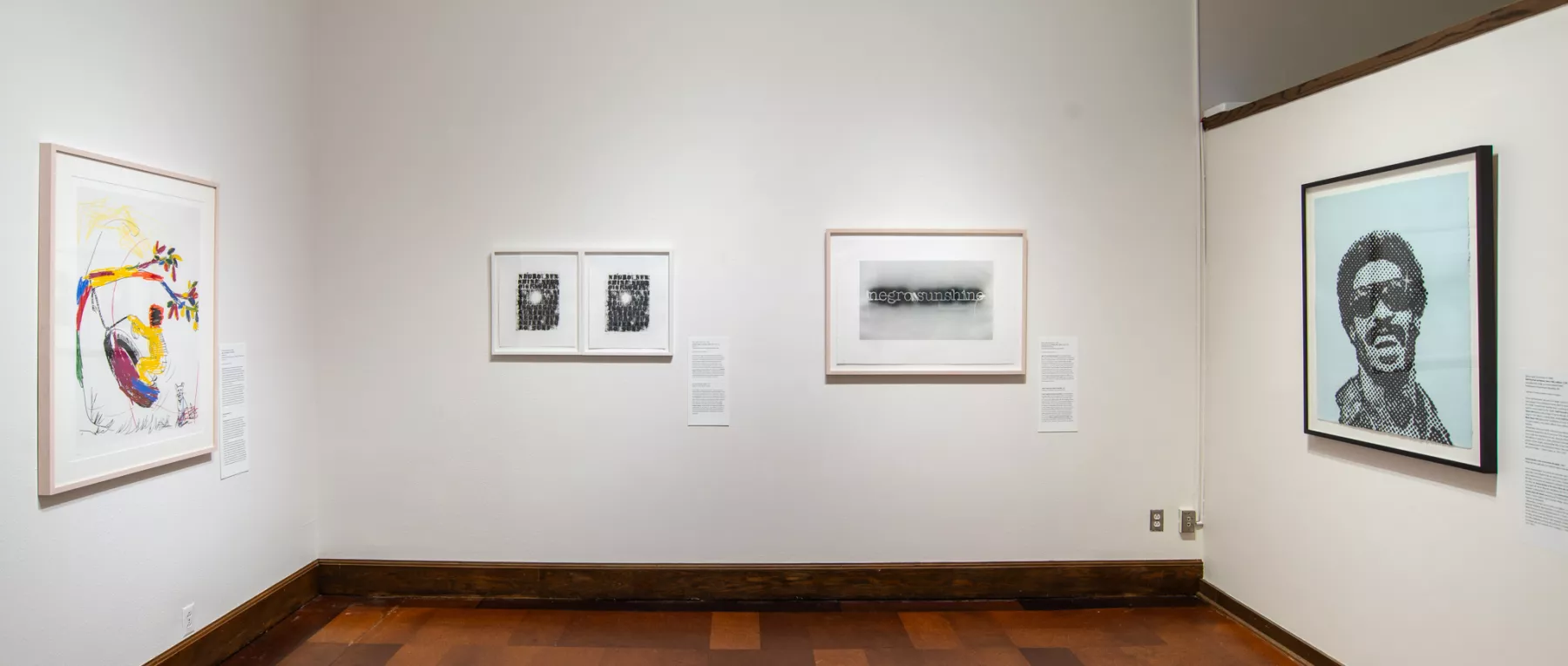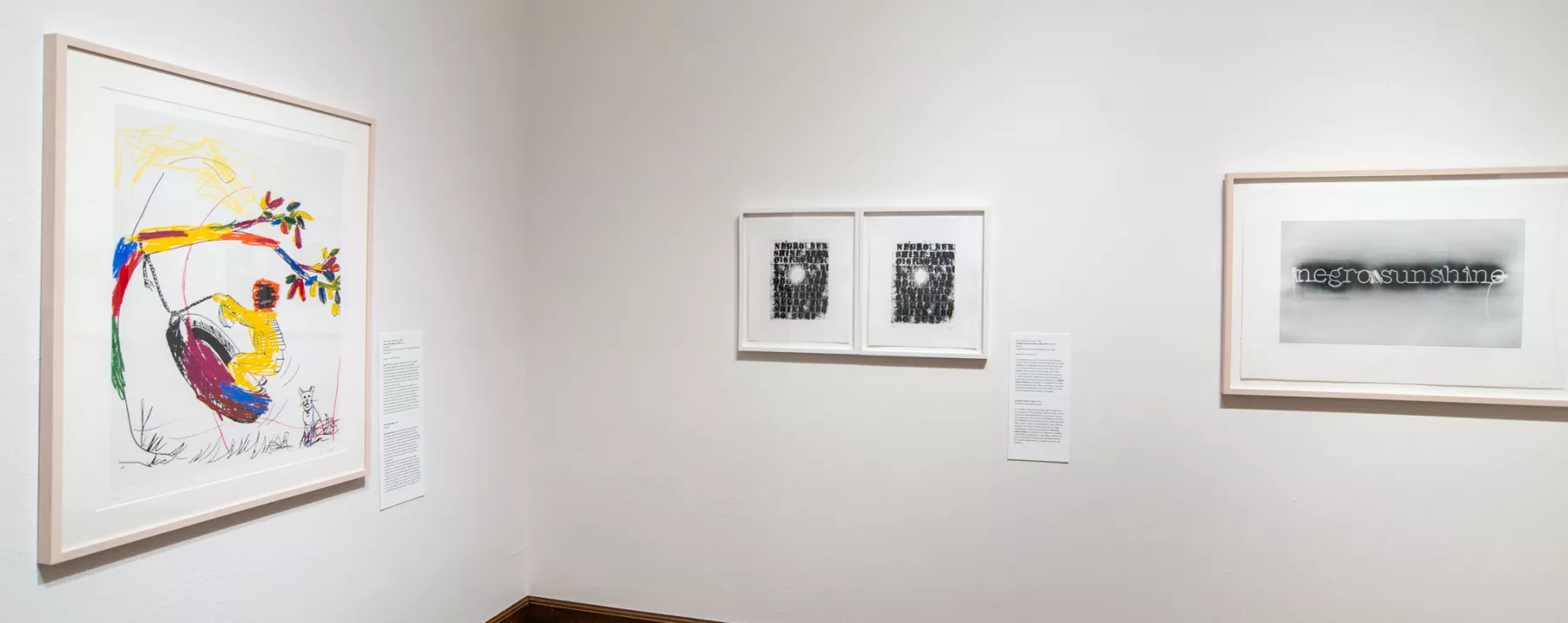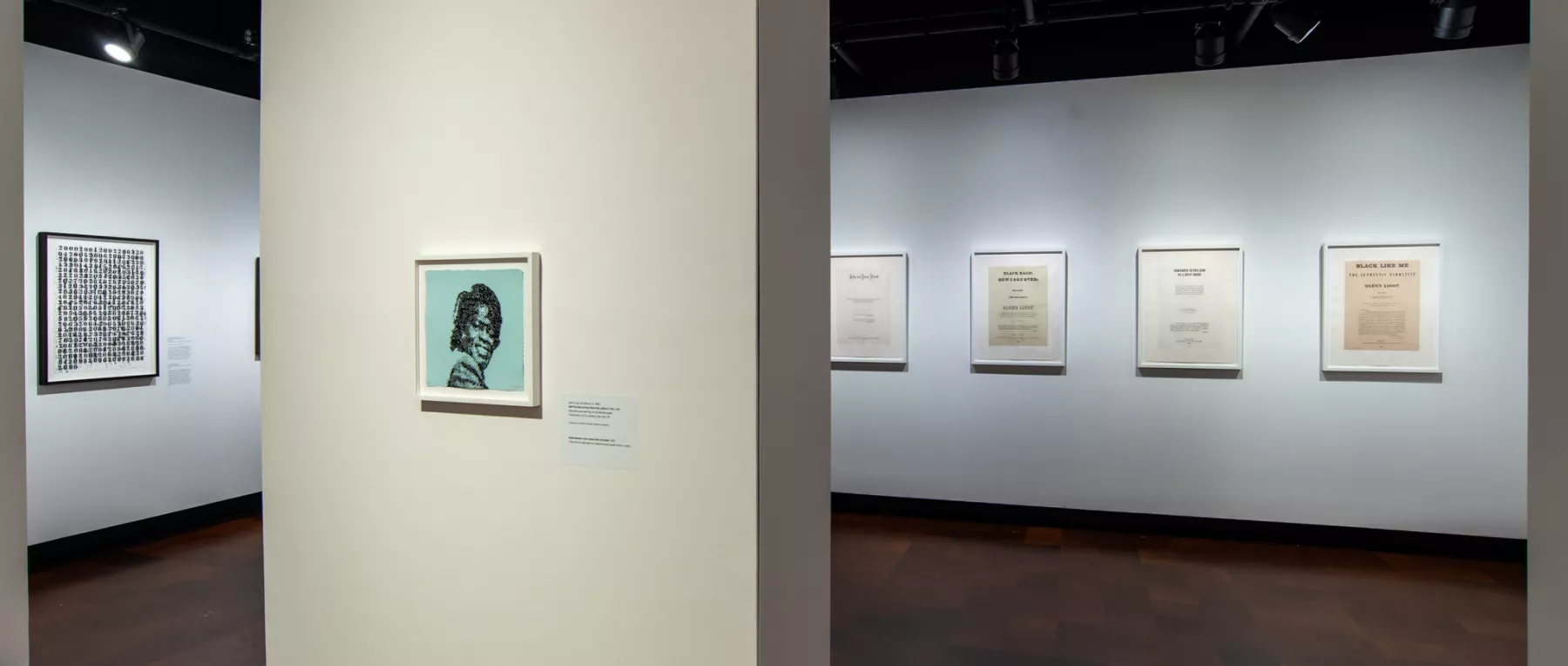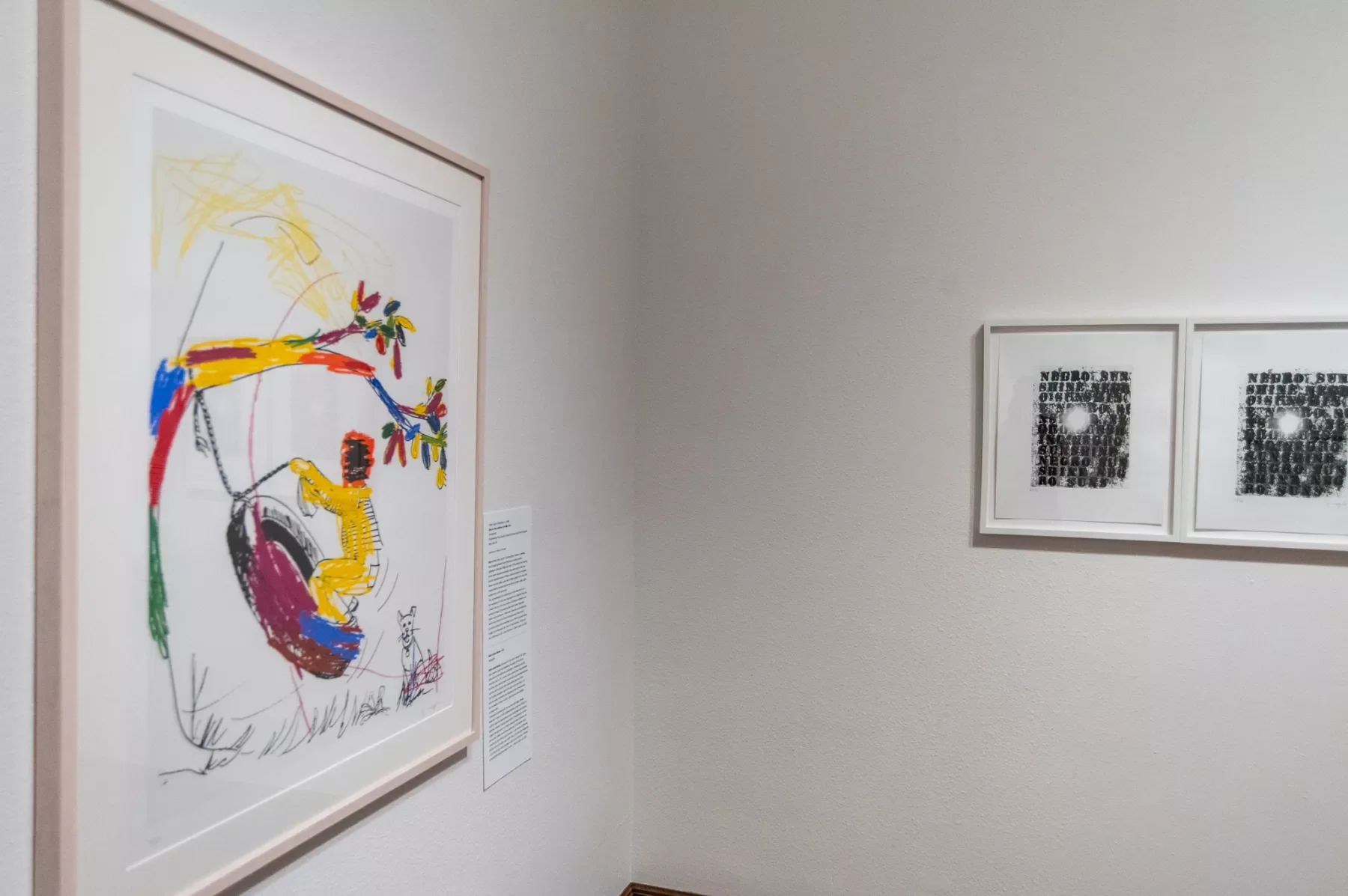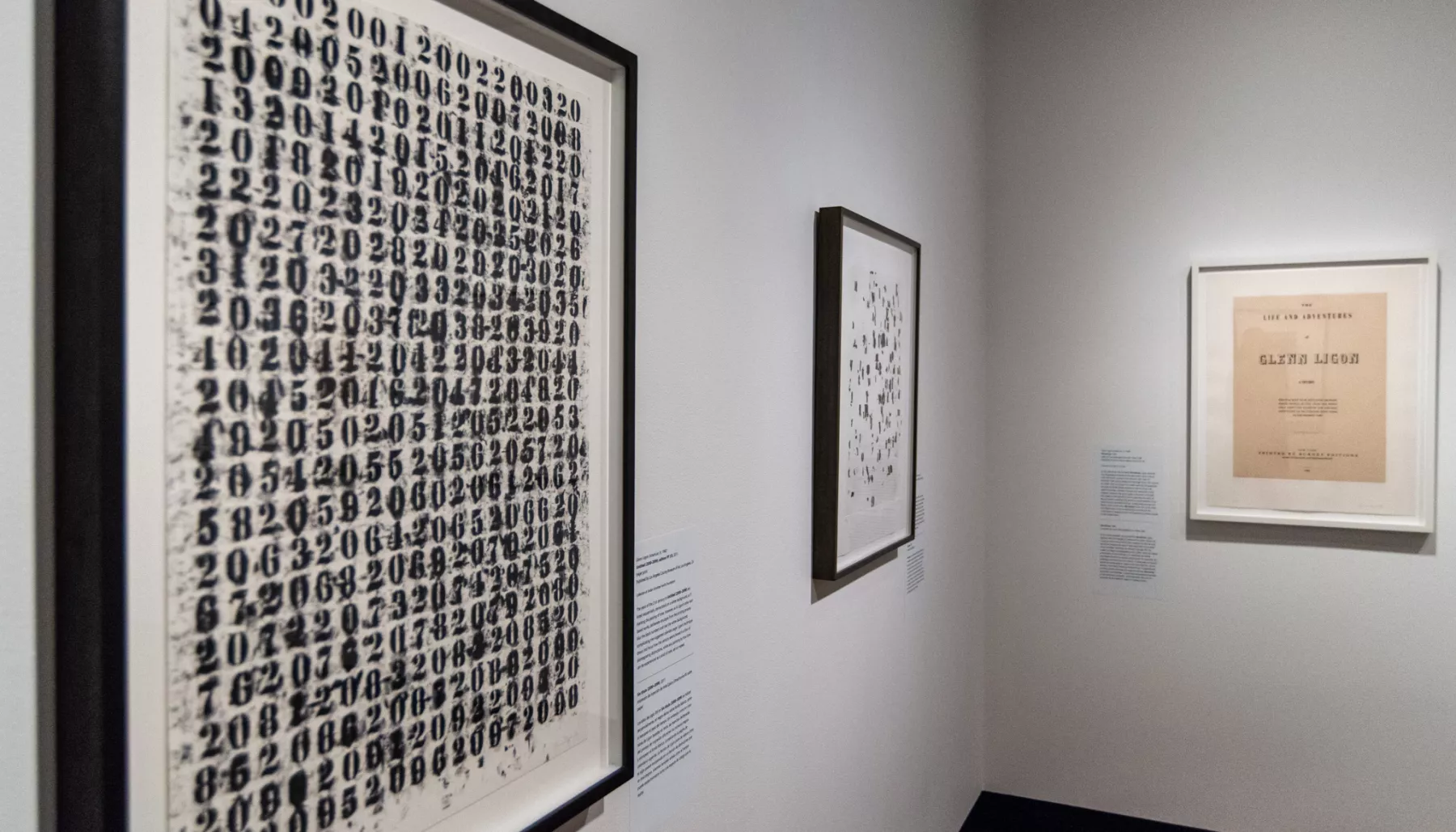Glenn Ligon: From the Collections of Jordan D. Schnitzer and His Family Foundation brings together works on paper by the influential artist that explore how constructions of Blackness in the United States infuse popular culture, literature, and history. Featuring the series “Narratives,” 1993, Self Portrait at Nine Years Old (James Brown), 2008, and End of Year Reports, 2003, among other artworks, the exhibition provides insights into Ligon’s long-running aesthetic interrogations into his personal social positioning and experiences as a queer, Black man. The structures and histories that make these shared identity categories are also made subject in the artist's critical examination. The artworks engage the entangled histories of race, literature, and culture, with a broad range of references from slave narratives to children’s coloring books. Together, they poignantly articulate the role of language and popular culture in the structuring of the self—and society—in both the past and present.
Glenn Ligon (b. 1960) is best known for his landmark text-based paintings, made since the late 1980s, which draw on the influential writings and speech of 20th-century cultural figures including James Baldwin, Zora Neale Hurston, Jean Genet, and Richard Pryor. In 2011 the Whitney Museum of American Art held a mid-career retrospective of Ligon’s work, Glenn Ligon: America, organized by Scott Rothkopf, that traveled nationally. Important recent shows include: Grief and Grievance (2021), at the New Museum, where Ligon acted as a curatorial advisor; Des Parisiens Noirs at the Musées d'Orsay, Paris (2019); and Blue Black (2017), an exhibition Ligon curated at the Pulitzer Arts Foundation in St. Louis, among others. Ligon has been the subject of solo museum exhibitions at the Camden Arts Centre in London, the Power Plant in Toronto, the Walker Art Center in Minneapolis, and the Studio Museum in Harlem, among others. His work has been included in major international exhibitions, including the Venice Biennale (2015 and 1997), Berlin Biennal (2014), Istanbul Biennal (2011, 2019), Documenta XI (2002), and Gwangju Biennale (2000). Ligon’s work is held in the permanent collections of museums worldwide including Tate Modern, London; Centre Pompidou, Paris; Museum of Modern Art, New York; San Francisco Museum of Modern Art; and the Los Angeles County Museum of Art. His awards and honors include a John Simon Guggenheim Memorial Foundation Fellowship and the Studio Museum’s Joyce Alexander Wein Artist Prize. Most recently, Ligon was elected as a member of the American Academy of Arts and Letters.

About the Jordan Schnitzer Family Foundation
At age 14, Jordan D. Schnitzer bought his first work of art from his mother’s Portland, Oregon contemporary art gallery, evolving into a lifelong avocation as collector. He began collecting contemporary prints and multiples in earnest in 1988. Today, the collection has become one of the most important post-war and contemporary collections in all mediums, exceeding 20,000 objects and has grown to be the country’s largest private collection of prints and multiples. He generously lends work from his collection to qualified institutions with no additional fees. The Foundation has organized over 180 exhibitions and has had art exhibited at over 160 museums. Mr. Schnitzer is also President of Schnitzer Properties, a privately owned real estate investment company based in Portland, Oregon, owning and managing office, multi-tenant industrial, multi-family and retail properties in six western states.
The Foundation was established in 1997 as a non-profit organization to manage the collections of Jordan D. Schnitzer and the Jordan Schnitzer Family Foundation. The Foundation publishes scholarly brochures, exhibition catalogues, and catalogues raisonnés in conjunction with exhibitions drawn from the collections. The Foundation also funds museum outreach and programming – especially to lesser served communities – furthering the mission of letting artists speak to us, through their art, on important issues facing society.
